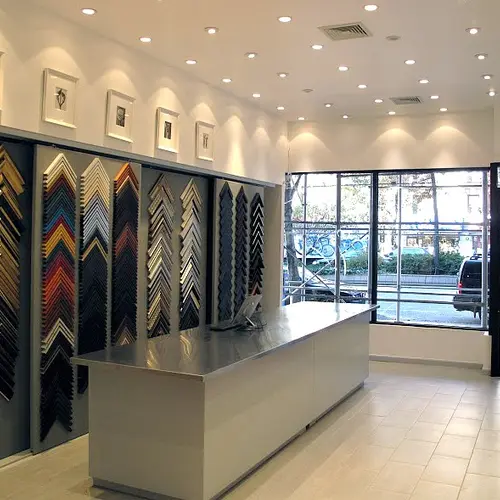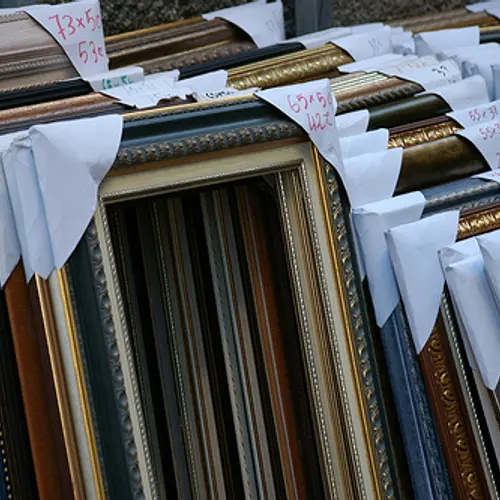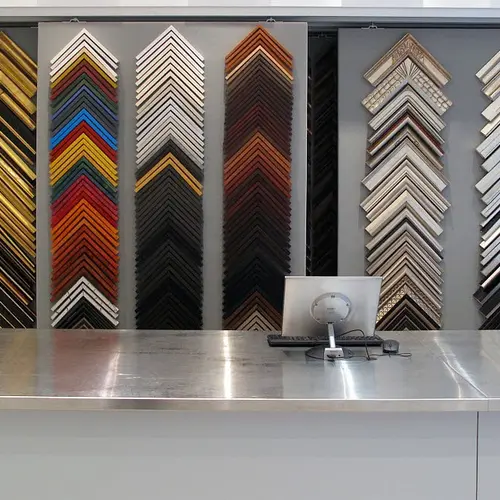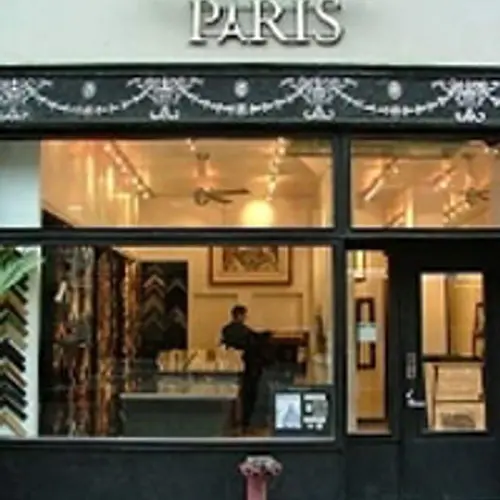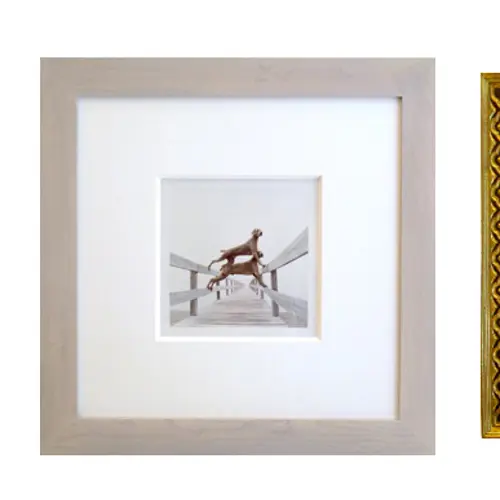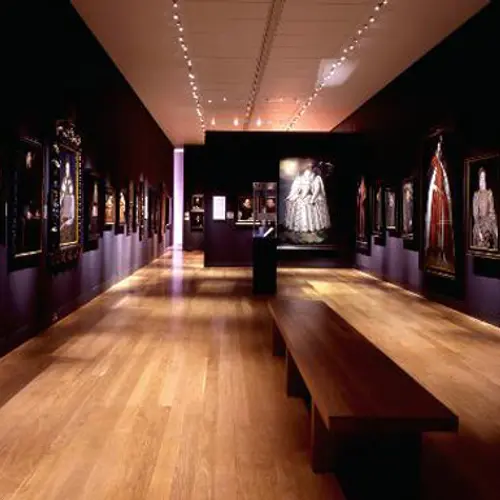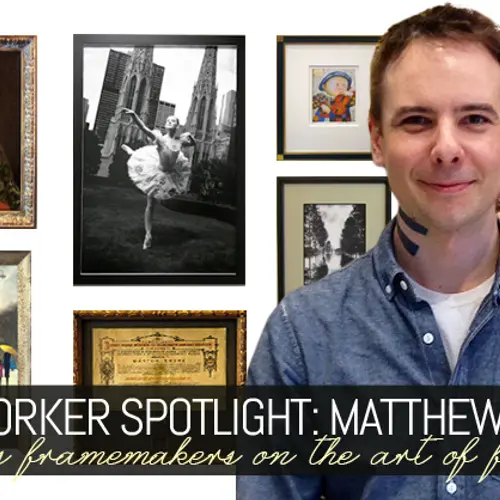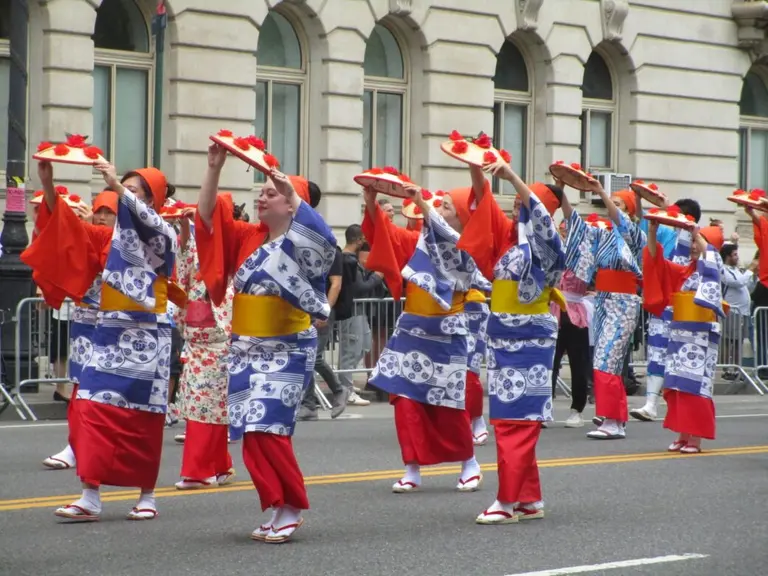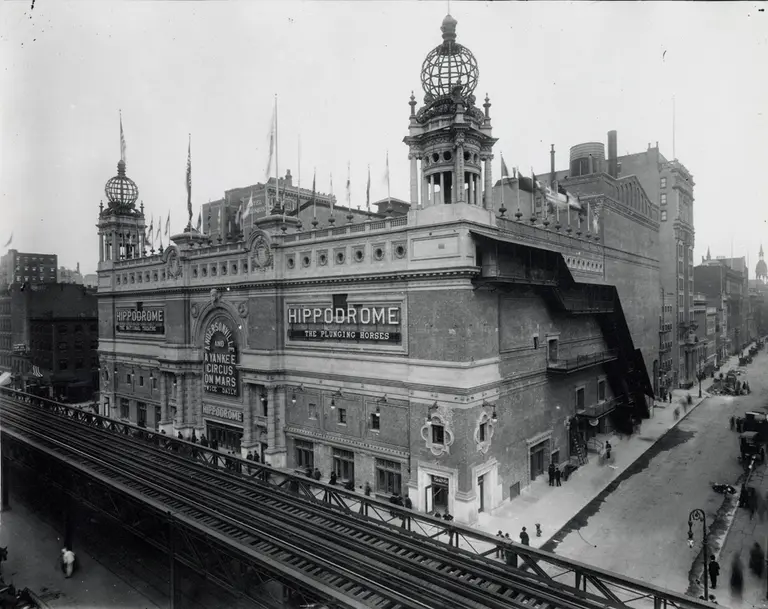New Yorker Spotlight: Matthew Namie of Paris Framemakers on the Art of Framing
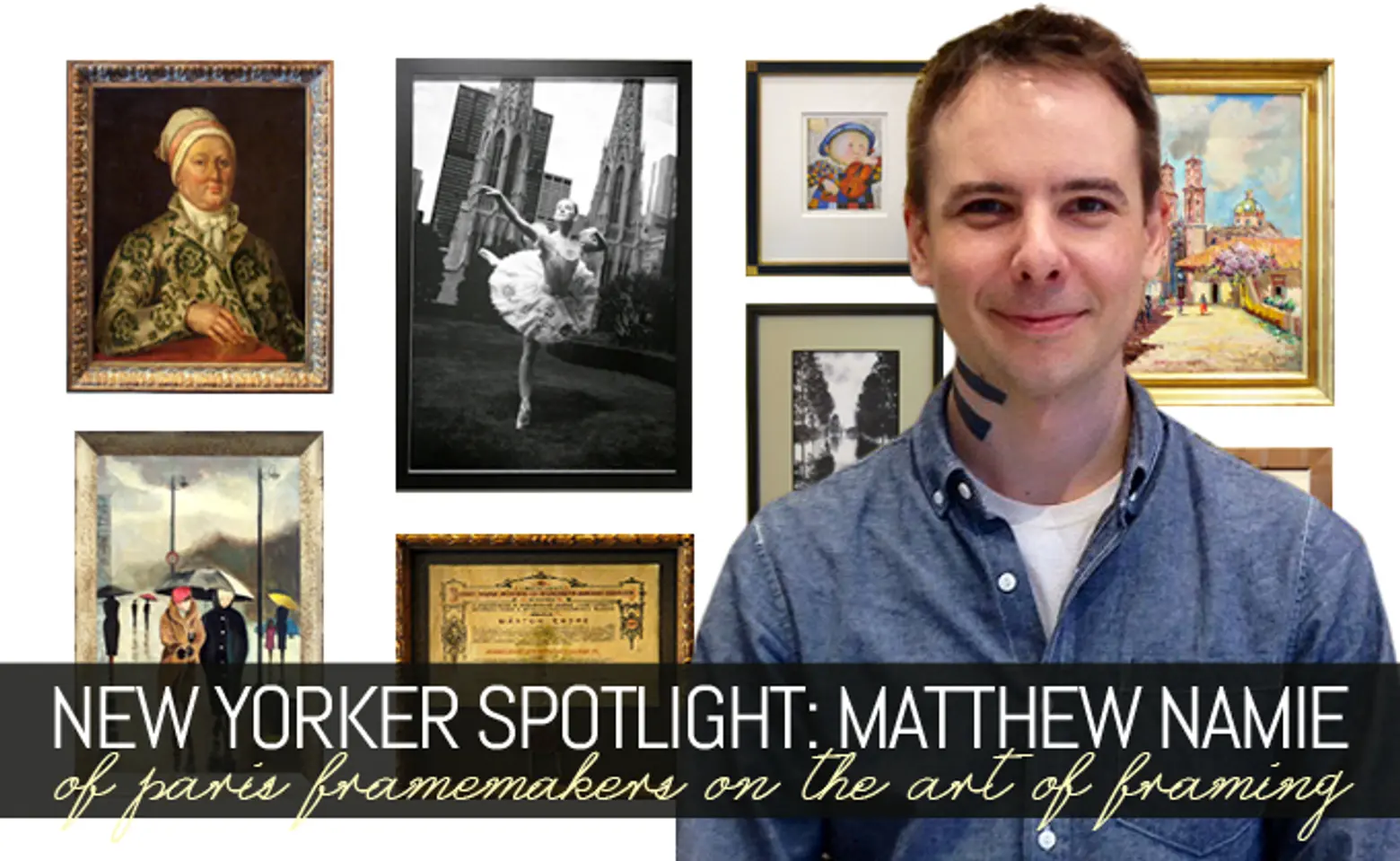
Painters, portraitists, and photographers–the visual artists tend to get all the credit. But there is another type of art that goes into making a piece beautiful, and that is the art of framing. Most of us rarely think about this component, but for Matthew Namie, it’s always on his mind. As a salesperson at Paris Framemakers on the Upper West Side, he works with customers to make sure their prized artworks are framed just right.
Paris Framemakers, located on 75th and Amsterdam, opened twenty years ago, and also has stores on 81st and Madison and 100th and Broadway. Matthew is a recent addition to Paris, but not to framing. He has seven years of experience under his belt and a keen eye when it comes to frames, mats, and glass. He will soon be heading across town to serve as the manager at the Upper East Side location.
While working with Matthew on my own framing needs, I realized that many New Yorkers don’t know the intricacies of this craft. So, I recently popped into Paris Framemakers to learn all about the art of framing and Matthew’s expertise.
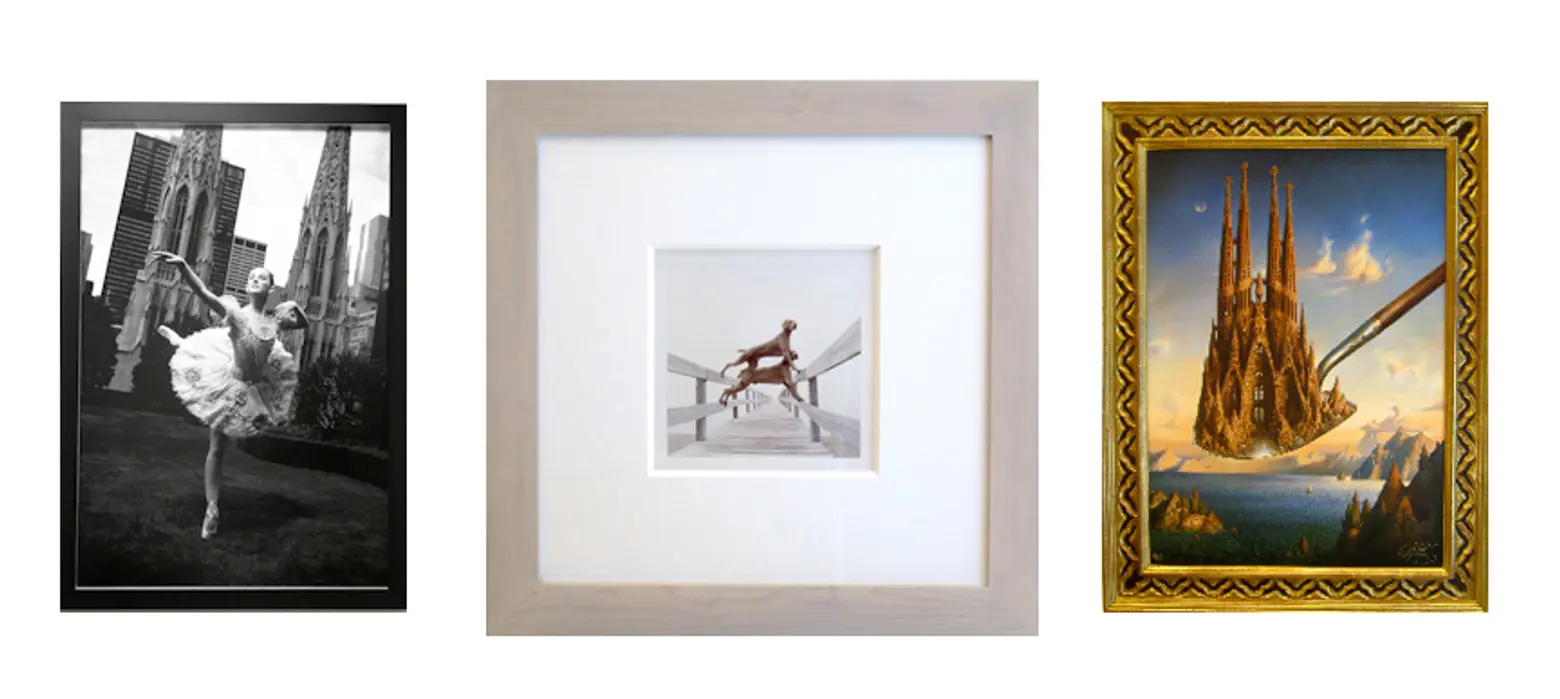 Works that have been framed by Paris Framemakers
Works that have been framed by Paris Framemakers
When not framing, Matthew, or Math-You as he is known in the art world, is working on his hand-painted portraits on fabric, some of which will require frames. His works are in dialogue with a number of artists including Warhol, Lichtenstein, Pat Steir, Joan Mitchell, and Robert Motherwell. In the past few years, three of Math-You’s works have sold at Sotheby’s.
As an artist, what drew you to framing?
I think mostly because art and framing go hand in hand. It’s often very crucial for art to be framed in order to be presented properly.
When you started out in the industry, what were some of the skills you had to learn?
It’s funny because my dad was a framer. That was a hobby of his. He did it for so long, about 30 years. I never wanted to do what my dad did. There were so many opportunities growing up to learn about framing, but I never did. When I started out at GK Framing in Tribeca, I didn’t know anything. I started out doing production. I learned how to cut materials. I learned all the terminology. About a year into it, I was moved upstairs to management. Those skills were a good foundation to start with; a good salesperson has to know what they are selling.
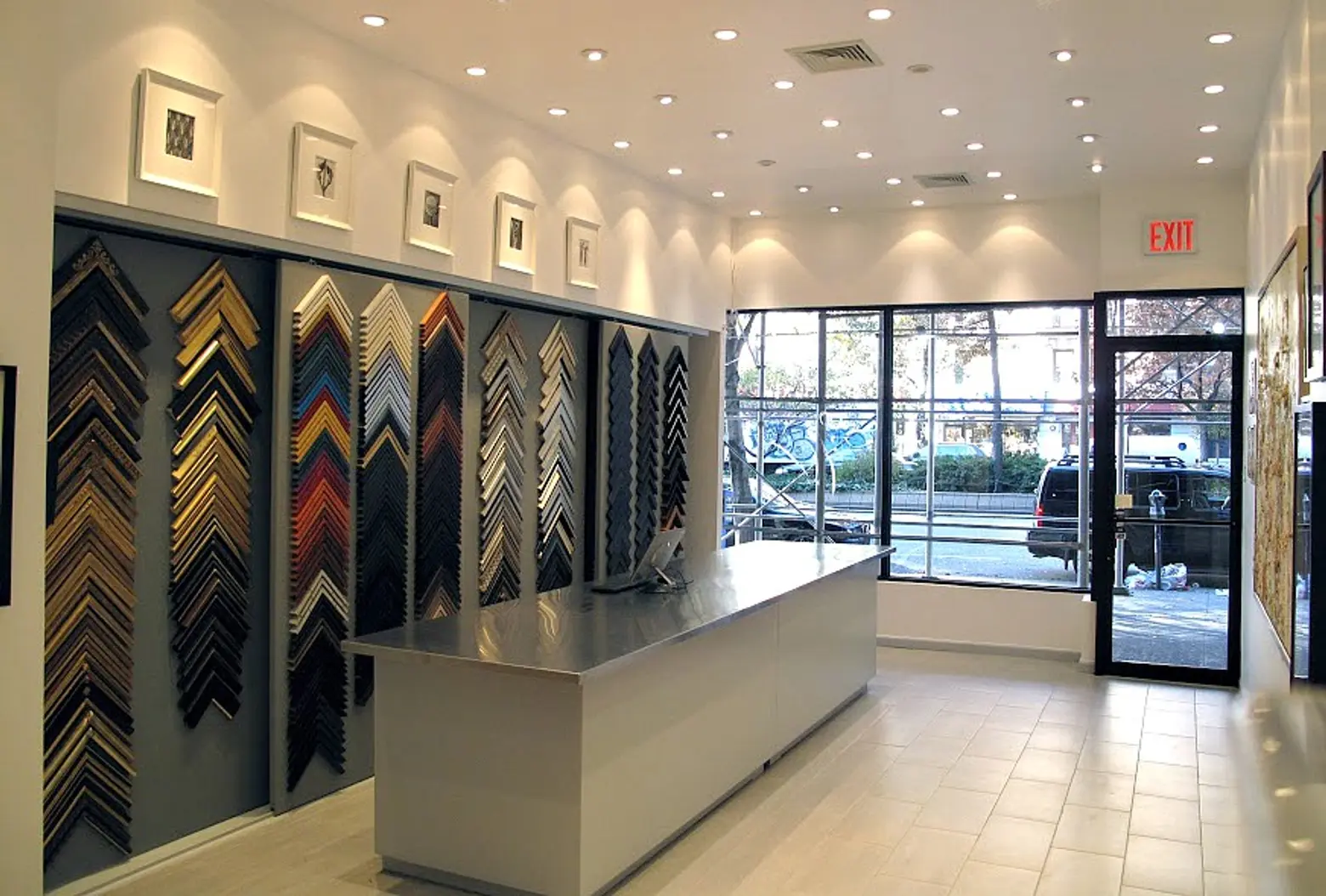
How were your measuring skills before framing?
Before I started framing, I had never looked at a tape measure so closely. I didn’t even know how to read one.
How are your measuring skills now?
Very good. We measure everything down to the 1/16 inch. Some shops measure even finer, down to the 1/32.
Do many of Paris Framemakers’ customers need assistance selecting frames, mats, and glass?
Most of them do, and that’s what we’re here for. That’s where my background in art really comes in handy because I frame my own pieces from time to time. I follow my own rules of keeping it simple.
When a customer brings in a piece to be framed, what are you looking for to begin the framing process?
I always say the art will tell you what it wants. For example, let’s say this card is your art, and you want to frame it. Right away, this is a really bright white card, so you’re not going to do a warm white mat. Since this is so bright, I would pick a bright white mat to go on it. From there, we are doing the bright white card, the bright white mat, and then maybe we want to explore a bright white frame to keep it all consistent. That’s just one idea. This card also has a lot of pink in it. You could do a pink frame if you wanted to be a little more adventurous, but it depends on the client. It’s not my piece; it’s your piece. You have to frame it for your liking and your space.
I always advise people to keep framing as simple as possible. You don’t want to overwhelm the piece with the frame. If you are looking at the frame and the matting, that’s a failure of a frame job. You want the mat and frame to disappear so that the art comes forward. The art is the star, and the mat and frame are meant to support it.
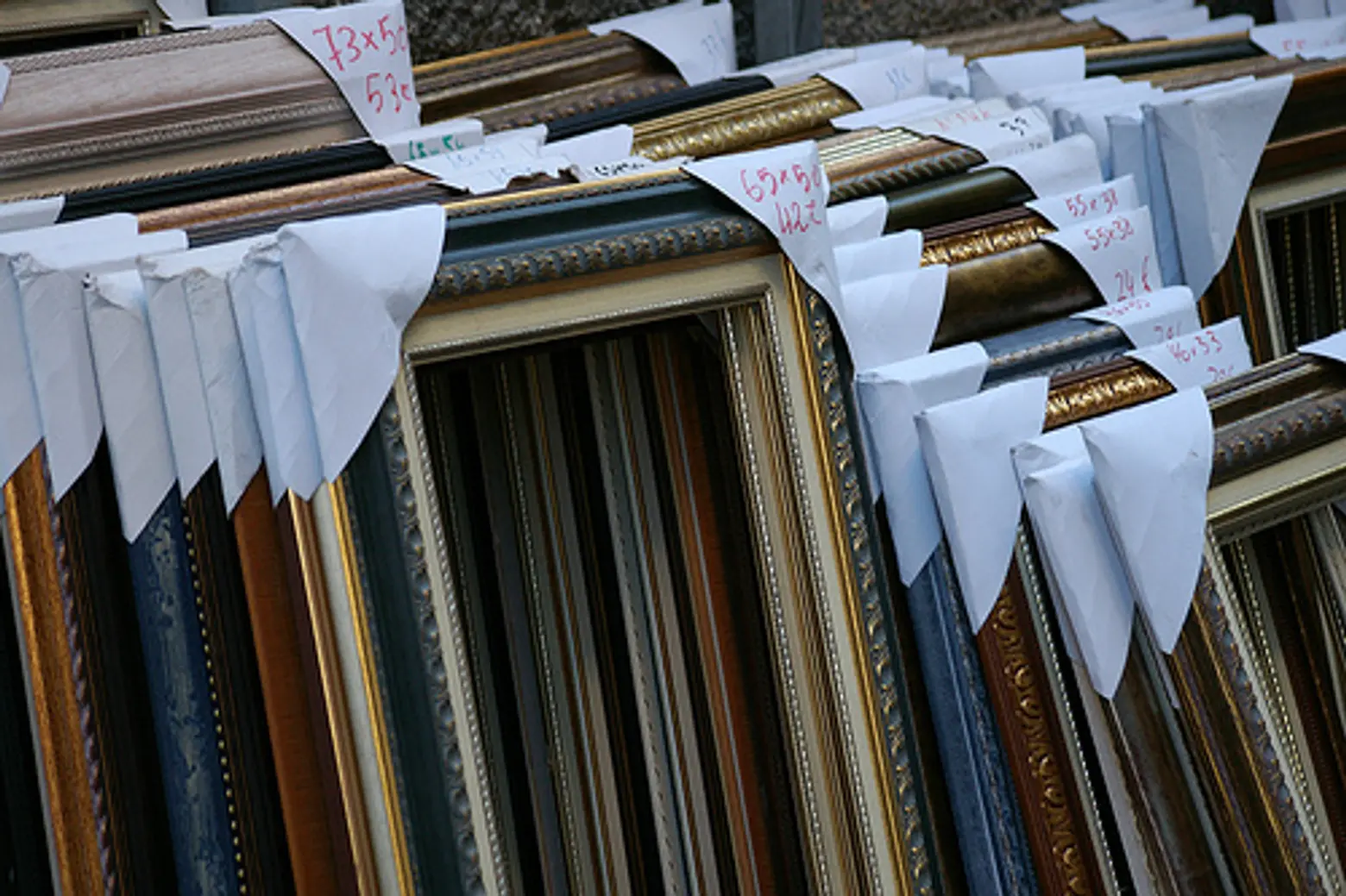 How many different white mats are there?
How many different white mats are there?
A lot. That’s a crazy question. I would probably say fifty shades of white. We always try to match colors as best as possible, or if not match, get as close as possible. That’s why we have so many options.
When should glass be used in framing?
There is no actual right or wrong or rule. Sometimes you put a painting under glass. That’s usually in the case of really high value painting like an Andy Warhol, a Lichtenstein, or maybe something that has a very fragile surface.
There are several different kinds of glass. What are the differences between them?
There are at least ten different types of glass, but we tend to just narrow it down to two–Conservation Glass and Museum Glass. They both have a UV protectant, which is really important so the piece won’t fade. Museum Glass has an anti-reflective quality, which is a luxury and really nice, but it does cost a little extra. All the pricing is based on square footage.
Does Paris Framemakers carry commercial frames as well as design custom frames?
We offer both. Sometimes a client just wants a piece framed on a wall and has a budget. In that case, we look at commercial frames. Other times a client really wants that hand-finished look, which means a seamless, miter-less corner. That’s the great thing about being in a custom shop; maybe we don’t have it on the wall, but we can make it. We do some research. We have samples made. We have the client come in. We make changes.
Are there trends in framing?
The word art is so vague in the way it includes not just painting, sculpture and drawing, but also fashion. I personally feel the fashion industry really plays into the design world. There is this concept of barely there, which came out in the fashion and makeup industries. Especially with makeup, everyone wants that barely there look. The whole thing of, “I want to wear a lot of makeup, but I want it to look like I’m not wearing any makeup.” We have barely there frames. It’s still a frame, but it’s barely there. White on white is a very contemporary concept. A white mat with a white frame is following that barely there look. You never would have seen that in the 80’s necessarily. That would have been way too simple. In the 90s and 2000s, there was a trickle down effect. The barely there trend in makeup trickled into fashion. From there, it trickled into interior design, and then into framing. It’s traditional to want to crop over something, but we’re in very contemporary times right now, so we see all the edges.
What’s the most unusual item someone has come in with?
Actually, very recently we had a shell encaustic piece. The overall piece was really small, maybe 6 inches x 4 inches. It’s basically a seashell that was mounted to this board and it was painted all over. It had a hook sticking away and then a ring attached to it on the other side. One piece was falling off, but that was important. You have to be careful not to underestimate something. I suggested we do a painted panel. We are going to do these aluminum L hooks so it’s real object framing.
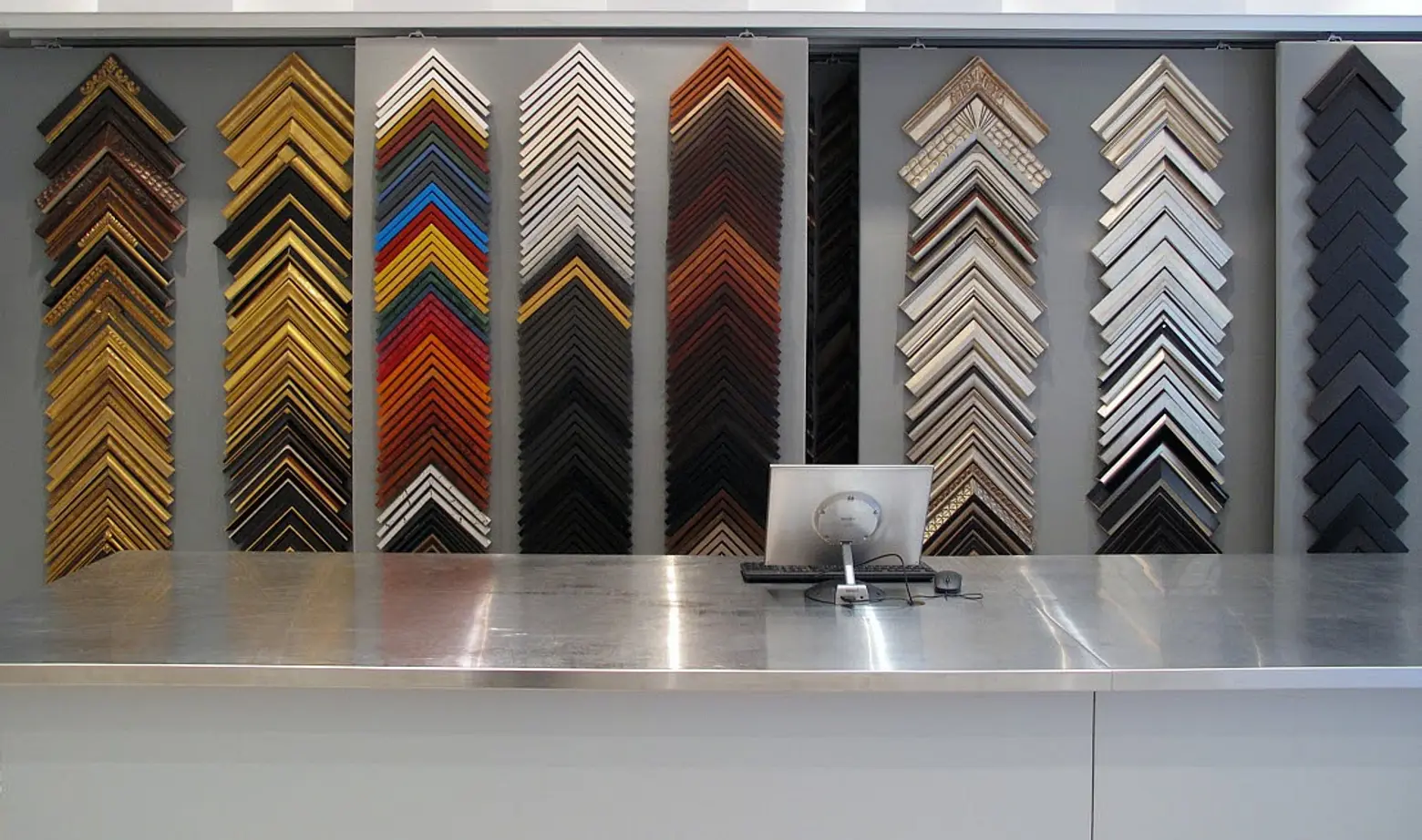
When hanging a framed piece, what are some of the considerations?
We have a professional installer who works with us full time and is also an artist. You want an artist hanging pieces because they have a good sense of proportion, style, and composition. Anybody can just put a nail on the wall and tack it up. The reason you hire an artist is placement and position.
Do I put it at eye level or above or below? There are all these kinds of questions. I always tell people it depends on your height. We are basing it on the client. It’s their space, their art, and where their eye level is. Some people prefer to have things lower. There is also another style of hanging, which is salon style. From the top of the ceiling to the bottom of the floor, everything is filled in between.
How has being a painter helped you as a framer?
It’s all based on proportions. I would say that’s one commonality you get between the art world and framing. Let’s go back to our card. This is a little piece of art, so you don’t want to put a gigantic mat on it. That’s a look, but to be more aesthetic you do a smaller mat. If you get the proportions right, it visually makes sense and looks harmonious. That’s what you always want to do. You want to make something look harmonious, natural, easy, and effortless, as opposed to trying too hard.
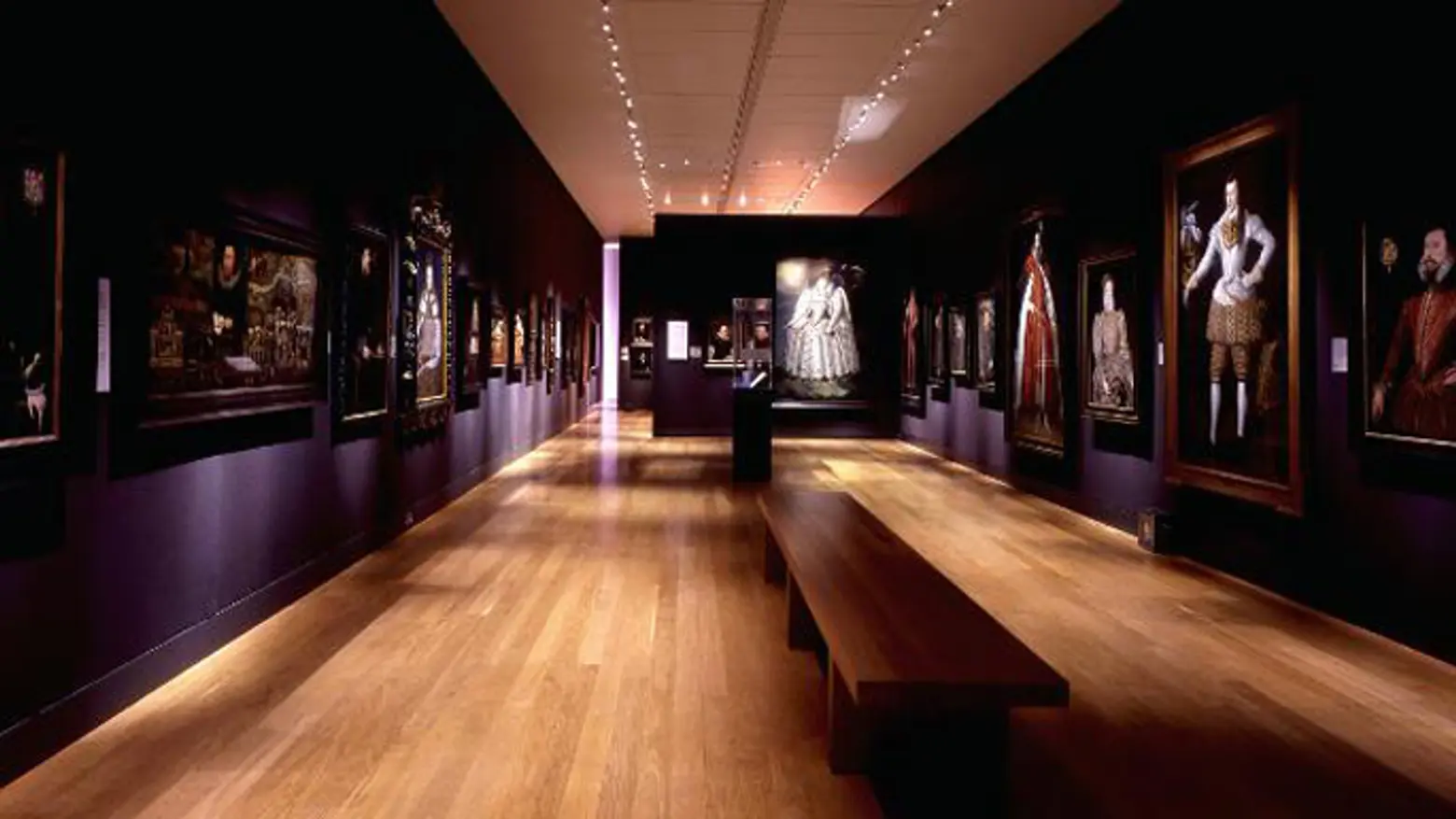 The National Portrait Gallery, London. Image via London and Partners
The National Portrait Gallery, London. Image via London and Partners
At museums, do you find yourself focusing on the frames?
I’m ruined for museums. I’ve been to different museums all over the world, and I continually look at the frames. I went to the National Portrait Gallery in London last year with a friend of mine. I was just staring for a while and said, “what a beautiful frame.” I completely ignored the art. Of course the art was some gorgeous Flemish painting from the 1700s, but the Dutch frame on it was stunning.
If you could select a frame that epitomizes New York, which one would it be?
I would say a Maple Light Teak frame. It’s a simple cap frame. It’s 11-1/16 x 1-1/2 inches. I use this frame all the time. I feel like it suits several different kinds of pieces. The color, which we call Light Teak, is really a washy grey type. It’s a stain so you see some of the wood grain coming through. We use this one a lot because of the color. It goes really well in New York because in New York, we like black, grey, or just neutral, so this works well with a lot of people’s homes.
What’s your favorite part of your job?
I would say working with someone who has no idea in what direction they want to go. My favorite customer is someone who comes in and says, “Here is my art, help.” I just take over from there. When they come in the three weeks later and we unwrap everything, they just love it. They are so appreciative. That’s part of developing a rapport and a relationship with someone. Through the experience, that person also starts to develop his or her own aesthetic. Maybe I’m helping them do that through the art of framing. Before you know it, they are asking me for this frame, and I’m like, “you’ve learned well.”
***
Paris Framemakers
323 Amsterdam Avenue
New York, NY 1002
(212) 873-5602
[This interview has been edited]
